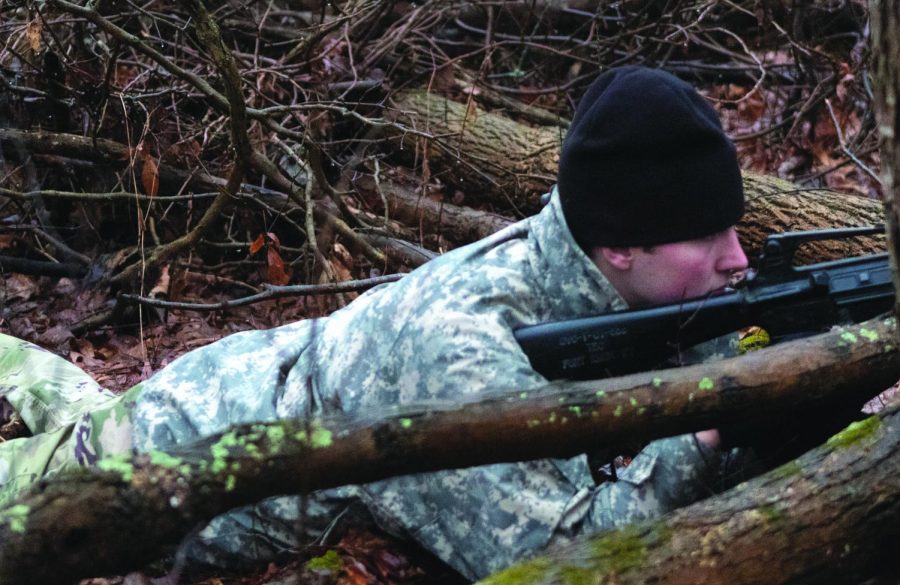ROTC members tackle the Platoon Attack and Lab
Sophomore construction management major John Moes watches the perimeter during the ROTC’s tactics portion on Feb. 26, 2020. The mission took place in the woods next to Allerton Field and the plan was to conduct an attack.
March 5, 2020
Members of ROTC gather at 7 a.m. every Wednesday for hands-on experience labs that cover different plans and attacks. For the next seven weeks, senior cadets in ROTC will be leading members into the platoon attack.
The platoon attack is directed towards surrounding the enemy, establishing the plan of attack and then attacking the enemy by surprise. The platoon leader establishes the plan, preparation and movement into the objective.
Members practice together, each keeping a tight watch on their own positions while making sure other members are doing their part correctly. The other seniors who don’t have an active role keep track and write evaluations about their peers.
Christopher Harris, a senior cadet in the program, leads the first platoon attack lab of the semester. He gathers the members around, establishes the plan and slowly moves into the objective. Despite the morning being cold, wet and foggy, members keep focus and concentrate on surrounding the enemy.
Harris splits his team into two groups: one surrounds his team and keeps a look-out on their base, while the other plans the attack and moves forward into the enemy. The team on the look-out all lay flat on the ground in a large circle around the team that plans the attack. With guns ready, bodies covered in wet clothing, eyes on the look-out, the team lying flat is prepared for almost any enemy attack.
The attacking team moves towards the enemy, and once there are eyes on the enemy, Harris leaves two of his members behind to keep watch on them. He returns to base shortly, plans out the whole attack with more elaborate details and moves forward.
Once the area is cleared, Harris sets his plan out and attacks the enemy. After going back on enemy grounds, everyone is placed in their position and the attack follows through. Through the harsh weather conditions, many “deaths” and interruptions with planning, the attack in the end was considered a success to some and a failure to others. While members who carried out the attack plan “died” in the process believe that this plan was a failure, others believe that this was a win because the mission was completed.
Each attack is different, depending on the senior’s plan. In some failed plans, too many members might “die” and the attack would end up going horribly. However, the goal at the end still remains the same, which is keeping the majority alive while surprising and attacking the enemy.
Bridget Lin covers ROTC and military. Contact her at [email protected].












